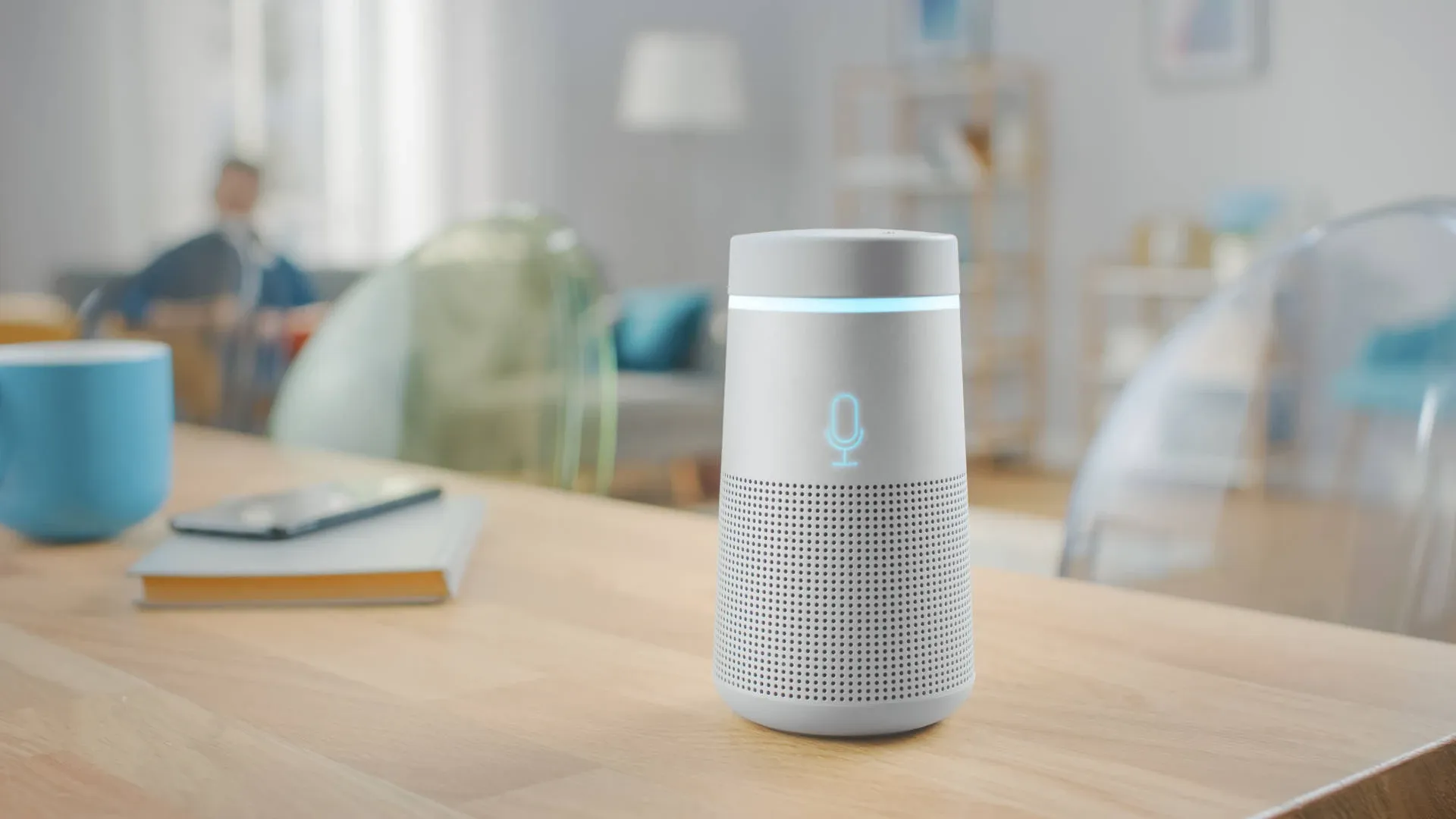Voice-activated smart assistants are rapidly becoming ubiquitous in our homes, seamlessly integrating into our daily lives. These intelligent devices allow us to control our smart homes, access information, and even get things done with just a simple voice command. This article explores the rise of voice-activated assistants, examining how these devices are changing the way we interact with technology and shaping the future of the connected home.
How Voice-Activated Smart Assistants Work
Voice-activated smart assistants operate through a sophisticated combination of speech recognition technology and natural language processing (NLP). When a user issues a command or asks a question, the device’s built-in microphone captures the audio input. This input is then processed using speech recognition algorithms, which convert spoken words into text. Once the spoken words are transcribed, the NLP component of the smart assistant analyzes the text to understand the user’s intent and extract relevant information or perform the requested task.
These assistants rely heavily on cloud-based processing to handle the complex algorithms required for accurate speech recognition and NLP. The audio input is often sent to remote servers where powerful computational resources process the data and generate a response. This cloud-based approach allows voice-activated smart assistants to continuously improve their accuracy and functionality through machine learning algorithms that learn from user interactions and feedback.
Popular Voice-Activated Smart Assistants
| Smart Assistant | Parent Company | Launch Year |
| Amazon Alexa | Amazon | 2014 |
| Google Assistant | 2016 | |
| Apple Siri | Apple | 2011 |
| Microsoft Cortana | Microsoft | 2014 |
Voice-activated smart assistants have become ubiquitous in today’s technology landscape, with several prominent options available on the market. Here’s a closer look at some of the most popular ones:
- Amazon Alexa: Launched by Amazon in 2014, Alexa is integrated into a range of Amazon devices, such as Echo speakers, Fire TV, and various third-party smart home products. It offers a wide array of skills and capabilities, including playing music, setting alarms, controlling smart home devices, and providing weather updates.
- Google Assistant: Introduced by Google in 2016, Google Assistant is available on various devices, including smartphones, smart speakers, and smart displays. It leverages Google’s powerful search capabilities to provide accurate answers to user queries, along with integration with Google services like Google Calendar, Google Maps, and Gmail.
- Apple Siri: Siri made its debut in 2011 as part of the iPhone 4S and has since been integrated into other Apple devices, including iPads, Macs, Apple Watches, and HomePod speakers. Siri is known for its natural language processing capabilities and seamless integration with Apple’s ecosystem of services and products.
- Microsoft Cortana: Cortana was introduced by Microsoft in 2014 and initially served as the virtual assistant for Windows Phone devices. It has since expanded to other platforms, including Windows 10, Xbox One, and smart speakers. Cortana offers features such as setting reminders, sending emails, and providing personalized recommendations.
These voice-activated smart assistants have revolutionized the way users interact with technology, providing hands-free convenience and access to a wide range of services and information. Each assistant has its unique strengths and capabilities, catering to different user preferences and needs.
Benefits of Voice-Activated Smart Assistants
Voice-activated smart assistants offer numerous advantages to users, making them an indispensable part of modern living. Some of the key benefits include:
- Convenience and hands-free operation: Users can perform tasks and access information simply by speaking commands, without the need to physically interact with devices. This hands-free operation is particularly useful when multitasking or in situations where manual input is impractical, such as cooking or driving.
- Accessibility for people with disabilities: Voice-activated smart assistants provide a crucial accessibility feature for individuals with disabilities, including those with mobility impairments or visual impairments. By enabling voice commands, these assistants empower users to interact with technology independently and efficiently.
- Integration with smart home devices: Many voice-activated smart assistants are compatible with a wide range of smart home devices, allowing users to control lighting, thermostats, security cameras, and more using voice commands. This integration enhances home automation and simplifies daily routines.
Overall, voice-activated smart assistants offer a range of benefits that enhance convenience, accessibility, productivity, and communication in users’ daily lives. As technology continues to advance, these assistants are likely to become even more integral to how we interact with and control our digital environments.
Challenges and Limitations
Navigating the landscape of voice-activated smart assistants isn’t without its challenges and limitations. One significant concern revolves around privacy, as these devices constantly listen for trigger words and phrases, raising questions about data collection and potential breaches of privacy.
Moreover, the accuracy of speech recognition technology remains a hurdle, with instances of misinterpretation leading to frustration and errors in command execution.
Additionally, the reliance on internet connectivity introduces vulnerability, as functionality may be compromised in areas with poor network coverage or during outages. Despite these challenges, ongoing advancements in technology and increased awareness of privacy concerns aim to address these limitations, ensuring a more seamless and secure user experience in the future.
Voice-Activated Smart Assistants in Different Industries
Voice-activated smart assistants are making significant inroads into various industries, revolutionizing processes and enhancing user experiences. Here’s how they’re being utilized across different sectors:
- Healthcare:
- Assisting medical professionals in accessing patient records
- Facilitating scheduling appointments and managing calendars
- Providing remote patient care through telemedicine services
- Offering medication reminders and health tips to patients
- Education:
- Facilitating interactive learning experiences through voice-controlled devices
- Providing personalized tutoring and educational content delivery
- Offering language translation services to facilitate communication in diverse classrooms
- Assisting students with research and homework assignments
- Retail:
- Improving customer service through voice-activated virtual assistants
- Streamlining inventory management processes with voice-based commands
- Enabling voice-based shopping experiences for customers
- Providing product recommendations and personalized offers based on customer preferences
- Hospitality:
- Enhancing guest experiences through voice-controlled room amenities
- Providing local recommendations for dining, entertainment, and attractions
- Facilitating seamless hotel bookings and reservations
- Offering personalized concierge services to meet guest preferences and needs
These diverse applications highlight the versatility and transformative potential of voice-activated smart assistants across multiple industries.
Future Trends in Voice-Activated Technology
Looking ahead, the future of voice-activated technology holds exciting prospects and innovations. Advancements in artificial intelligence (AI) and machine learning are expected to drive greater accuracy and sophistication in speech recognition and natural language processing capabilities. This will enable voice-activated smart assistants to understand context, nuances, and user preferences more effectively, leading to more personalized and intuitive interactions.
Additionally, voice-activated technology is anticipated to expand beyond traditional devices like smartphones and smart speakers, integrating seamlessly into a wider range of everyday objects and environments. As voice recognition technology continues to evolve, we can expect to see increased integration with augmented reality (AR) and virtual reality (VR) applications, opening up new possibilities for immersive and interactive experiences. These developments underscore the transformative potential of voice-activated technology in reshaping how we interact with digital devices and navigate the world around us.

